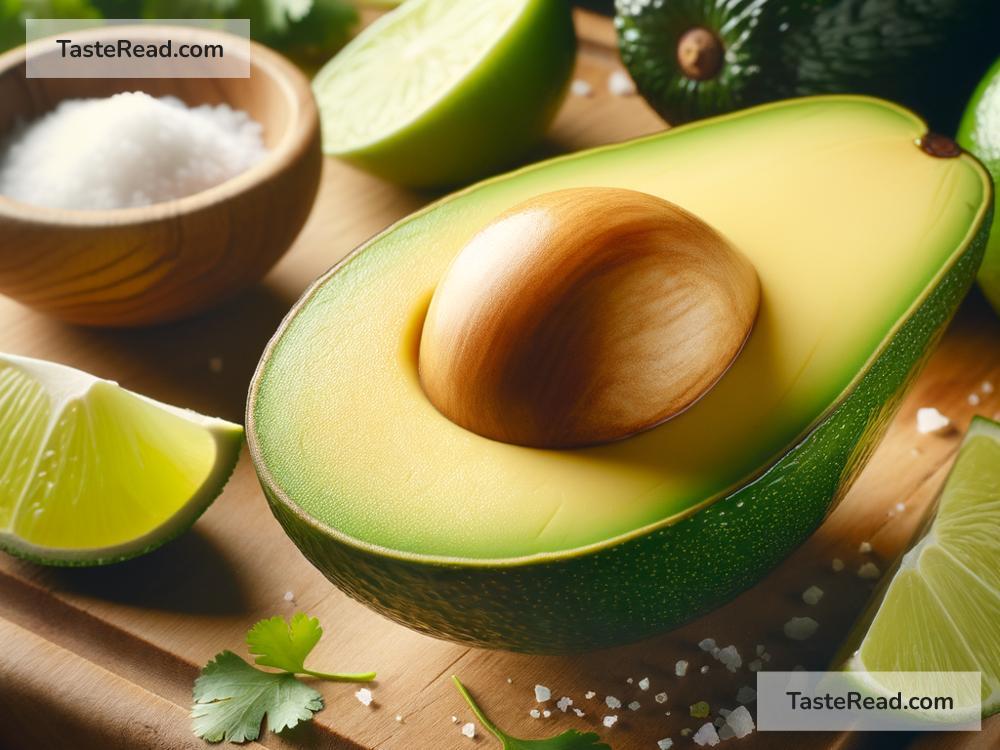The Science Behind the Buttery Flavor of Avocados
Avocados are a unique fruit. While most fruits are sweet, avocados are creamy, rich, and have a buttery texture and flavor that makes them stand out. Whether you’re spreading them on toast or tossing them into a salad, their taste and texture feel indulgent but natural. But have you ever wondered why avocados taste the way they do? What gives them that buttery flavor? Let’s dive into the science to find out!
What Makes Avocados Taste Buttery?
The buttery flavor of avocados comes from the combination of their fat content, texture, and subtle flavor compounds. Unlike most fruits that are primarily made up of carbohydrates and sugars, avocados are packed with healthy fats. These fats not only contribute to their creamy texture but also play a big role in their overall flavor profile.
High Fat Content: The Key to Creaminess and Taste
When you think of the word “buttery,” the first thing that comes to mind is fat. Butter itself is over 80% fat, and that’s why it has such a rich taste. Similarly, avocados are one of the fattiest fruits in the world. They are composed of about 15–30% fat, depending on the variety and ripeness. Most of this fat is in the form of monounsaturated fat, which is the “good fat” that helps improve heart health.
Monounsaturated fats are smooth and creamy on the tongue, making foods with these fats taste luxurious. These fats also help carry flavor well, meaning that the subtle, nutty and earthy flavors of the avocado are intensified by its fat-rich structure. This is why avocados remind many people of butter—both are fatty, smooth, and melt in the mouth.
The Role of Oleic Acid in Avocado Flavor
A large part of the fat in avocado comes from a compound called oleic acid, which is a type of monounsaturated fatty acid. Oleic acid is not unique to avocados; it’s also found in olive oil, nuts, and—interestingly—milk fat, which is one of the components in butter. Oleic acid contributes to the smooth texture of avocados, and its mild, slightly nutty taste plays into the fruit’s buttery flavor.
Because oleic acid is so prominent in avocados, scientists believe it’s one of the main reasons people describe their taste as rich and creamy. There’s also evidence that oleic acid promotes a feeling of satiety (being full), which is why eating an avocado feels satisfying and indulgent.
Texture: Why Avocados Feel Like Butter
Another big reason why avocados remind us of butter is their texture. Their flesh is packed with tiny molecules that hold water and fat together in a smooth matrix. This structure is what gives avocados their silky, spreadable consistency.
When you scoop into a perfectly ripe avocado, it glides onto your knife or spoon like softened butter. This creamy texture comes from the natural balance of fat and water. Interestingly, this is also what makes avocados an excellent substitute for butter in certain recipes. They have just enough natural fats and oils to create a rich feel without overwhelming a dish.
Flavor Compounds: Subtle and Savory
While fat and texture play the biggest roles in the buttery feel of avocados, flavor compounds also contribute to the experience. Avocados have a very mild, earthy, and nutty flavor that complements their texture. This taste comes from naturally occurring compounds like carotenoids, sterols, and organic acids.
Carotenoids, for instance, not only give avocados their green or yellowish hue but also add hints of sweetness and nuttiness. These compounds are fat-soluble, meaning they blend well into the avocado’s fatty tissue, amplifying its creamy flavor.
There’s also a chemical reaction that occurs as avocados ripen. Enzymes break down starches and other compounds, softening the flesh and intensifying the creamy qualities. This ripening process is one reason why an unripe avocado can taste bland or bitter, whereas a ripe one explodes with buttery goodness.
The Perfect Avocado Experience
To fully enjoy the buttery flavor of an avocado, picking the right fruit is essential. A ripe avocado feels slightly soft but not mushy when you press it gently. If it’s too firm, it won’t taste as creamy, and if it’s overripe, it might have a funky flavor.
Pairing avocado with other foods can heighten its buttery qualities. For instance, adding a pinch of salt enhances its richness, while pairing it with citrus (like lime or lemon) complements its natural nutty and earthy tones.
Beyond Food: Science Meets Health
The beauty of avocados is that their buttery flavor doesn’t just taste good—it’s good for you too. Monounsaturated fats, like those in avocados, help lower bad cholesterol levels and reduce the risk of heart disease. They’re also rich in vitamins like E and K, as well as potassium, which helps keep your body in balance. So while avocado tastes indulgent, it’s actually one of the healthiest foods you can eat.
Closing Thoughts
The buttery flavor of avocados isn’t just a coincidence—it’s a product of their unique chemical makeup, high fat content, and creamy texture. The combination of oleic acid, carotenoids, and their smooth consistency adds up to the perfect storm for a buttery experience. Whether you enjoy avocado solo, spread on bread, or blended into guacamole, you’re actually savoring the fascinating chemistry of a fruit unlike any other. Next time you bite into an avocado, take a moment to appreciate the science behind its rich, satisfying taste. Science never tasted so good!


